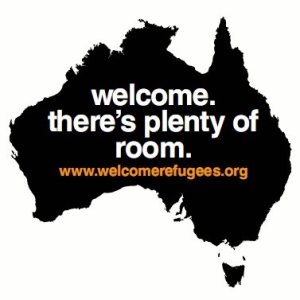The storm surrounding Kevin Rudd and his admission about ETS negotiations within the Labour Party has drowned out the good sense he talked about refugees last night on Q & A. Asked a question about asylum seeker policy, Kevin’s reaction was to say “let’s put this into context …” And he did – 42 million people worldwide who are refugees, people fleeing violence and strife, with no home.
Let’s repeat those – no home, 42 million.
He called it what it is – a humanitarian emergency that we need to deal with as a global community, where we work together to protect and serve the members of our human family who are most vulnerable. If only we heard this more often from political leaders, our community attitude towards refugees and asylum seekers might not be so bogged down in fear and untruthfulness. The context, the real issues, and the human stories get lost in the barrage of insults about queue jumpers and border protection and let’s face it, plain old selfishness and xenophobia.
As is often the case, it is those who are most vulnerable who very often get hurt the most, and in Australia, we are a long way from a mature public approach to migration and people movement. I wonder if we’ll ever get there?
Others following the former PM’s lead on this one would help.



What other people reckon …